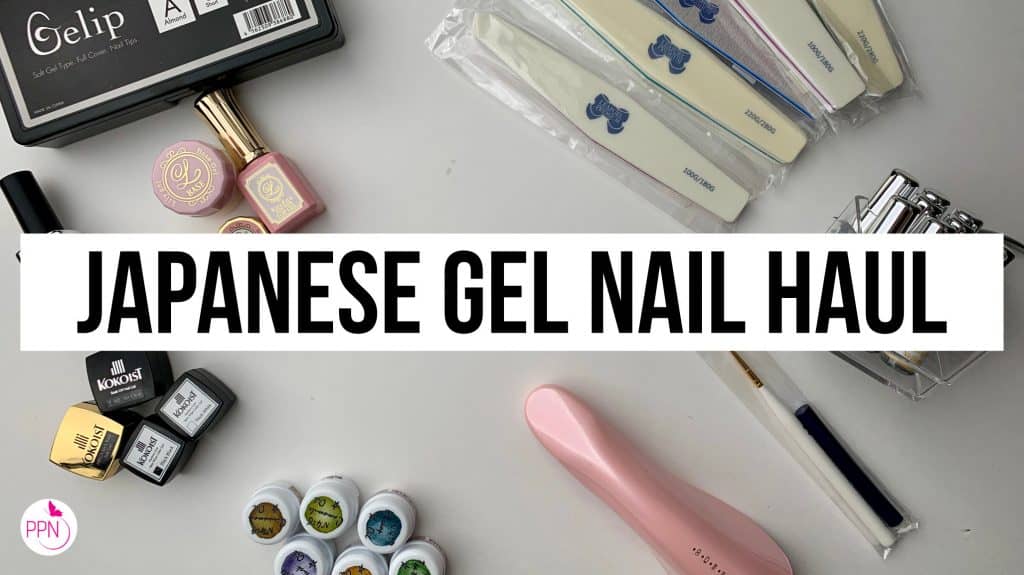Is Japanese just another fading trend?
No, Japanese Gel is here to stay. And frankly… we’ve been playing catch up here in the states.
Since the explosion of gel polish into the U.S. market back in 2009, we were bombarded with a lot of “new” brands of the same gel polish.
That left nail stylists like myself who did not want to work with liquid and powder or hard gel searching for something different and a bit stronger than gel polish. Something that could work across the board with all of my clients. A nail product, or system of products, that eliminated lifting, harsh prep, and harsh soak-off removals.
And so in 2015 I entered into the wonderful world of soft potted gel systems.
Now, I want to be clear. Soft potted gel systems (so, soft gel in pots or jars) is not a new concept invented in Japan. But the Japanese market certainly capitalized on it. They made it essentially the standard of manicuring.
Now where does that leave thinner (sometimes called hybrid gel) gel polish formulas? Is there a place for them anymore in the salon?
Yes. It leaves them in their own category. The Gel Polish Category, which is the category of an alternative to nail polish manicures. If you or a client wants a step up from a regular nail lacquer application and the instantly dry, thin polish-application, and extended wear is needed… then a gel polish manicure is your answer.
Gel polish (usually in a bottle) has evolved since 2009! Many brands have revamped their formulations to include longer wearing base coats and highly pigmented gel colors, because at its debut here in the US, these two things (base & color pigmentation) in our gel polish were a bit lacking. Meantime, in Japan, via the use of soft potted gel, that was not a problem.
And so onto the what… What are Japanese gels?
Simply and generally put, Japanese Gel is high quality gel, made in Japan with little dilution ingredients. They offer wonderful versatility via their consistency and pigmentation. You can create natural nail overlays and extensions with them.
One fun fact I’ve come to learn with Japanese Gel Brand owners, is that they love creating unique formulations and not sharing their exact recipes as part as white labeling. In general, white labeling a product means that the manufacturer of the product will sell the exact same product to you without their label, at a cheaper price for you to brand and sell as your own.
Instead, Japanese gel owners will consult with you to formulate something similar or totally different depending on what you need for you to market and sell as your own. Now, I certainly don’t know all the details that go into the design and business of Japanese Gel nail formulation, but what is often unique with these companies is that they team up with trending and/or successful nail artists for collaboration.
I love this because this essentially allows all of us, (yes! you too one day maybe!) to get to that level of sharing-in on a product launch without having deep venture capitalist dollars in your pocket. Talk about fair game!
In my totally biased opinion over here (lol!) Japanese Gels in their potted form, are the cutest most artistic way of doing nails.
But, all kidding aside… Offering a different way of doing nails via technique and products, allowed me to double my income in the salon, and is exactly why I host a program (the Master Gel Nails Course) to help other nail techs do the same! If you want to learn about this Japanese Gel course check out our free Masterclass down in the description box below.
Can you get Japanese Gel in the U.S.?
Yes, there are at least 4 amazing brands (Presto, Vetro, Kokoist, and Leafgel) that have been importing their gels from Japan to us here in the US for at least 4 years.
Can Japanese Gel soak-off?
Yes, with the exception of Presto’s builder gel, every Japanese Gel Brand I know is soak-off.
However, because soft potted gel systems like Japanese Gel are thicker than gel polish, efile removal is the most time-efficient way to go. Efiling is definitely a more advanced method of removal, but worth the effort and training. If you’re a beginner, and still intimidated by the use of an efile, no worries, I was too. For the time being, thin your Japanese Gel manicures down with a coarse hand file and then soak them off in acetone.
Can Japanese Gel damage your nails?
As I learned years ago from industry mentor Greg Salo, “It’s the fools, not the tools that do the damage!”- OK, is that not such a hip statement, or what?!
My favorite characteristic of Japanese Gel is that they do not require harsh prep prior to application like acrylics, dips and hard gels do.
A smooth sponge buffer, and 90% alcohol is all you need for prep. Do more at the expense of your clients’ nails.
So, when using Japanese Gel correctly, you can actually achieve natural nail goals!
Well friends, that’s about all the raving I have to do today on Japanese Gels, again if you want to learn even more and my signature application methods check out that free masterclass down in the description box below, and also check out my favorite Japanese Gel Nail brands.
Have a merry start to the week and I’ll see you in the next one!


![[[ Nail Thoughts X Kokoist ]] Bottled Gel Launch | All COLORS SWATCHED](https://paolaponcenails.com/wp-content/uploads/2020/11/ntswatchesnewthumb-1024x575.jpg)